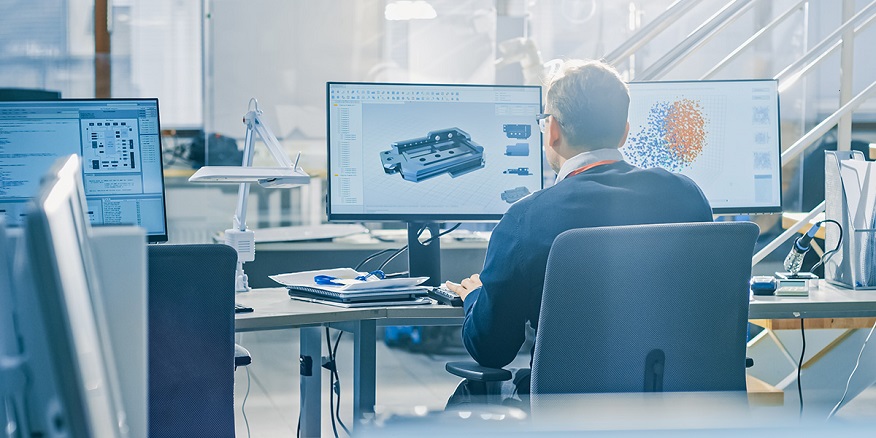
PARTNER CONTENT: High performance computing (HPC) decision-makers are starting to prioritize energy efficiency in operations and procurement plans. In this article, learn how organizations can use HPC in the cloud to enhance their energy efficiency solutions.
Over the last two years, global electricity demand reached the highest peak on record, increasing by 6 percent in 2021 and by 2.4 percent in 2022. According to the International Energy Agency (IEA), data center workloads account for almost two percent of global energy. In a typical data center deployment with 100 server racks, the energy cost translates to $3 million annually.
The rapid growth of artificial intelligence (AI) models is increasing energy use in data centers, resulting in higher energy demand for the mainstream adoption of AI-powered tools. As a result, the need for organizations to adopt an energy-efficient approach for running HPC simulations and AI workloads is growing.
Convergence of Cloud, HPC, and AI/ML
HPC workloads have been experiencing a shift with a new category emerging. As HPC users are increasingly integrating AI and machine learning (ML) technologies into their workloads the interest in methods and models existing with large language models (LLMs) and foundation models (FMs) is growing.
In a recent survey, Hyperion Research found that nearly 90 percent of HPC users surveyed are currently using or plan to use AI to enhance their HPC workloads. These enhancements can be implemented on multiple levels including hardware (processors, networking, data access), software (data management, queueing, developer tools), AI expertise (procurement strategy, maintenance, troubleshooting), and regulations (data provenance, data privacy, legal concerns).
As a result, the cloud, HPC, and AI/ML are converging with two simultaneous shifts. The first one is towards workflows, ensembles, and broader integration; and the second shift is toward tightly coupled, high-performance capabilities. The outcome is tightly integrated massive-scale computing accelerating innovation across industries from automotive to financial services to healthcare to manufacturing and beyond.
AWS And Nvidia Scale HPC Across Industries
- Healthcare and life sciences: AI-accelerated computing is helping scientists and researchers run large-scale HPC simulations and train large models more efficiently for drug discovery. With purpose-built Nvidia GPU-accelerated AI/ML tools and services running on Amazon Web Services (AWS), data processing times are reduced and genomic sequencing is accelerated enabling research institutions to bring drugs to market faster and reduce drug discovery costs, while lowering energy consumption from research and development cycles.
- Financial services: Banks, trading firms, hedge funds, fintechs and other financial institutions are using HPC and AI/ML to build models and applications for risk modeling, portfolio optimization, customer experience improvements, and fraud detection. Using Amazon Elastic Compute Cloud (Amazon EC2) instances, powered by Nvidia GPUs, financial firms can process data faster and feed into sophisticated ML models to get results faster and reduce energy consumption used for modeling.
- Energy: Geoscientists, geophysicists, and reservoir engineers working with high-fidelity, 3D geophysics visualizations for reservoir simulation and seismic processing can use Amazon EC2 instances to reduce energy consumption through faster simulations.
- Industrial manufacturing: Industrial engineers can run computational fluid dynamics (CFD) simulations needed to optimize product design with high throughput and low latency. With HPC and AI/ML tools and services from AWS and Nvidia, engineers can run high-fidelity simulations faster reducing total compute demands and improving energy efficiency.
Benefits Of Running HPC Workloads On AWS And Nvidia
EC2, powered by Nvidia GPUs, and a full-stack accelerated computing platform help organizations run HPC and AI workloads at scale with increased energy efficiency.
- Scaling compute infrastructure capacity: By running HPC and AI/ML on AWS, HPC teams can use flexible compute capacity, a high-performance file system, and high throughput networking to gain insights faster. Additionally, organizations can deploy Nvidia GPU-accelerated virtual machines with robust HPC management tools to run over 100,000 concurrent computing jobs. AWS services such as AWS Batch empower developers, scientists, and engineers efficiently run hundreds of thousands of batch and ML computing jobs, while optimizing compute resources.
- Solving HPC and AI/ML complexity: Energy-efficient solutions from AWS and Nvidia deliver greater data agility and elasticity of running workloads in the cloud. With solutions such as Nvidia AI Enterprise, an end-to-end, cloud-native software platform that accelerates data science pipelines and streamlines development and deployment of production-grade AI applications, HPC teams and AI/ML practitioners can easily accelerate HPC workloads and build, fine-tune, train, and deploy AI models faster.
By using tools such as the Nvidia HPC SDK, a comprehensive suite of compilers, libraries and tools, HPC users can maximize their productivity and improve performance and portability of their HPC applications.
Move HPC And AI/ML Workloads To The Cloud
Moving on-premises workloads to AWS, organizations can lower workload carbon footprints by nearly 80 percent and up to 96 percent once AWS is powered with 100 percent renewable energy.
Running any HPC and AI/ML workload in the cloud, organizations can take advantage of advanced technologies available on AWS, such as the latest HPC-optimized EC2 instances and Nvidia GPUs, to accelerate workloads while reducing total compute demands, and lowering energy consumption.
In addition, AWS and Nvidia announced a strategic collaboration to offer new supercomputing infrastructure, software, and services to supercharge HPC, design and simulation workloads, and generative AI. This includes Nvidia DGX Cloud coming to AWS and Amazon EC2 instances powered by Nvidia GH200 Grace Hopper Superchip, H200, L40S and L4 GPUs.
Learn more about how AWS and Nvidia can help accelerate HPC workloads.
This article was contributed by AWS and Nvidia.

